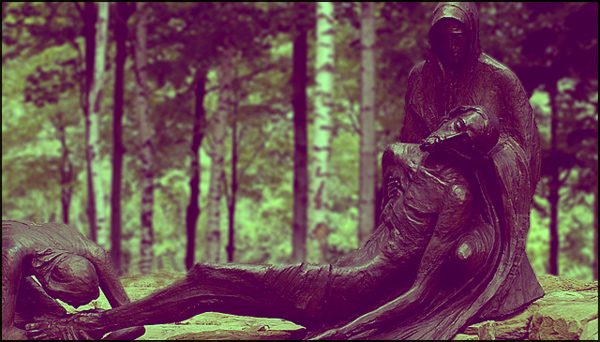Easter is over. Target has marked the last of their pastel-hued sugar infused egg-laying bunnies 90% off and life has returned to its savage monotony. Yet the significance of Easter of far is from over. Last week the question was raised, what if the resurrection of Jesus that we celebrate at Easter means far more than just our individual personal salvation? Over the next few weeks, we are using a book by Dr. Stephen Seamands, Give Them Christ: Preaching His Incarnation, Crucifixion, Resurrection, Ascension and Return to help us explore the great depths of meaning found in Jesus’ resurrection.
In John 11 we hear the story of the death of Jesus’ friend Lazarus. As would be expected Lazarus’ sisters, Mary and Martha, are grief-stricken and confused. Confused because Jesus didn’t come and heal their brother like he had healed so many others. In response to their questions Jesus says, “Your brother will rise again” (vs. 23). The words sound to us like the words of comfort we give so often at funerals. “One day you will see them again . . .” Martha agrees with Jesus, assuming he is talking about a future resurrection when God will set all things to right, but Jesus is not talking about some random day in the future, Jesus is talking about today. Jesus is pronouncing than an event, he is telling them the resurrection is a person, it is him, and the day of resurrection has come. The day has come when God will make right all that has been broken by sin, our “alienation from God, from each other, from ourselves, and from the land” (Snyder and Scandrett 78). The day every Jew ached with longing for had come.
“What was so stunning, then, to the early Christians about the resurrection of Jesus was not that God raised the dead. Like Martha, they already believed in a general resurrection when God would raise the righteous at the last day. What stunned them and sent them reeling was the timing of it. In the case of Jesus, the general resurrection, which was supposed to happen on the last day, had moved forward from the end into the present. What was supposed to happen on the final day had happened now” (Seamands 105).
Jesus’ resurrection does not mean all has been made new yet. The final redemption of creation is still to come. Still “the resurrection of Jesus has . . . set in motion the final redemption and transformation of all creation” (Seamands 108). The resurrection of Jesus means creation healed from the penalty of sin, death, the power of sin, and ultimately the very presence of sin.
Therefore, as Christians, we are people of mammoth hope. We are able to step into the absolute darkest of situations in life with extravagant hope because we know the power of sin has been broken and the day is coming when all of creation will be made new by Jesus and the very presence and effects of sin will be no more.
In summary, the resurrection of Jesus means not only personal salvation but also the salvation of all of creation. But even these just scratch the surface as we will see in the weeks to come.
Blessings,
Stephen
Citations:
Seamands, Stephen A. Give them Christ: preaching his incarnation, crucifixion, resurrection, ascension, and return. IVP Books, 2012.
Snyder, Howard A., and Joel. Scandrette. Salvation means creation healed: the ecology of sin and grace: overcoming the divorce between Earth and Heaven. Kindle Ed., Cascade Books, 2011.
Photo by Ravi Pinisetti on Unsplash


